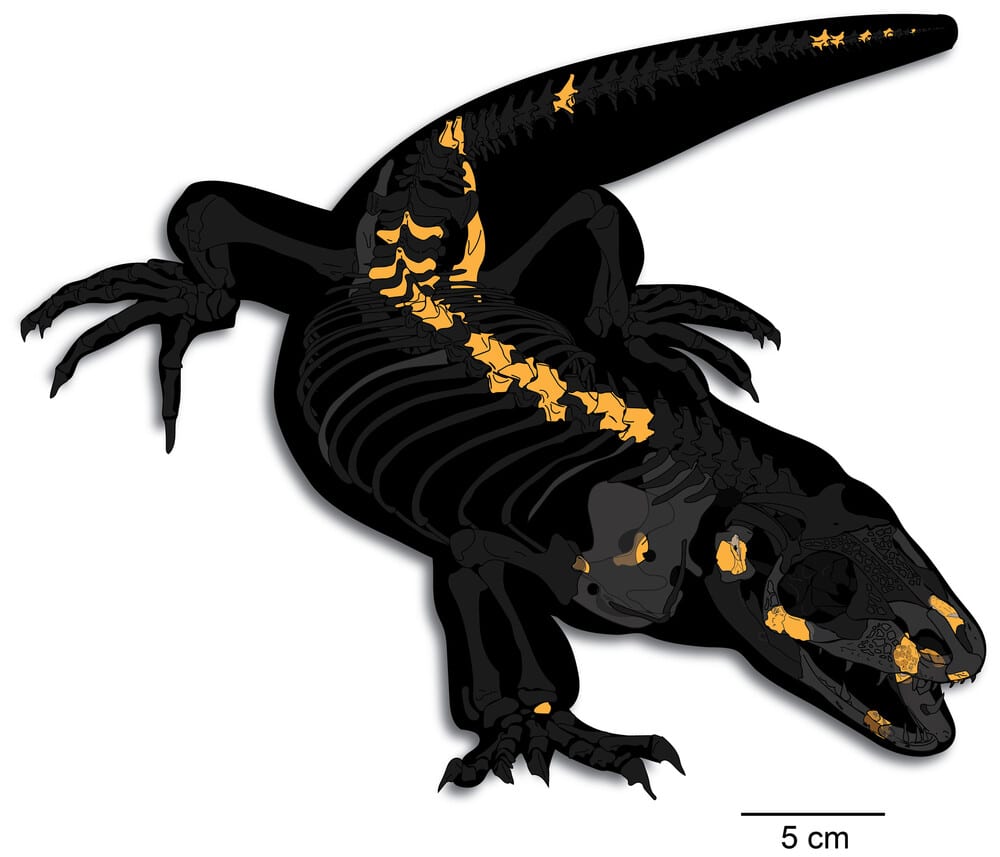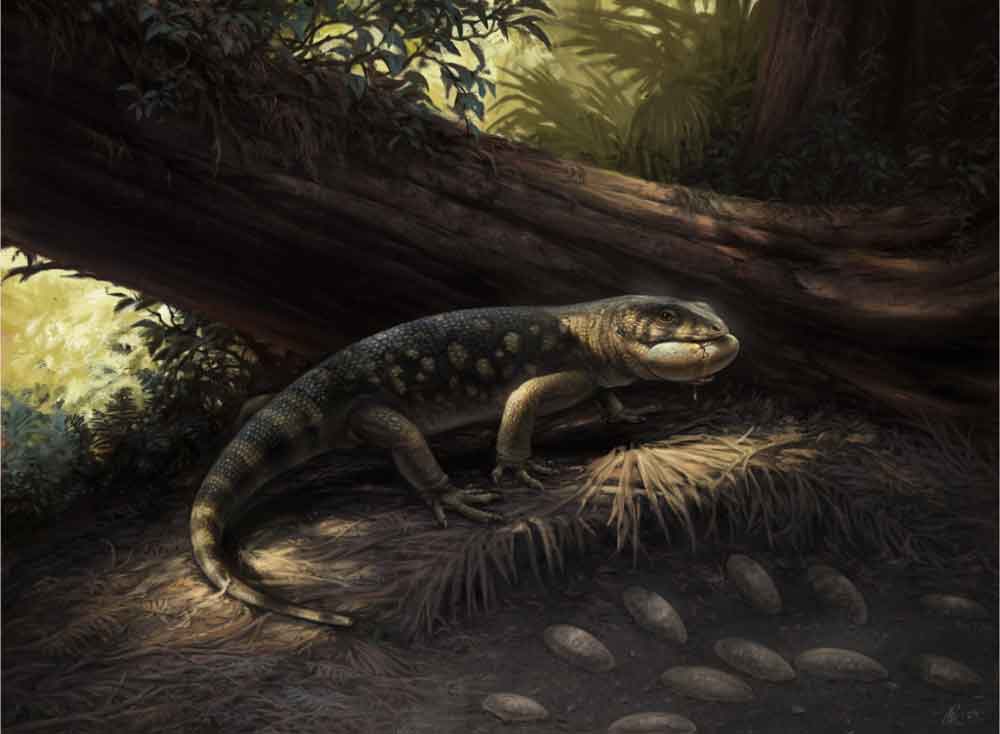The raccoon-sized monsetersaurian is named Bolg amondol after the goblin prince in J.R.R. Tolkien's "The Hobbit."
Researchers with the University of Utah have discovered a new monstersaur species in Utah’s Grand Staircase-Escalante National Monument. The raccoon-sized monsetersaurian is named Bolg amondol after the goblin prince in J.R.R. Tolkien’s “The Hobbit.”
The large lizard was discovered in a collection of bones at the Natural History Museum of Utah.
“I opened this jar of bones labeled ‘lizard’ at the Natural History Museum of Utah, and was like, oh wow, there’s a fragmentary skeleton here,” lead author Hank Woolley from the Natural History Museum of Los Angeles County’s Dinosaur Institute said in a article released by the University of Utah. “We know very little about large-bodied lizards from the Kaiparowits Formation in Grand Staircase-Escalante National Monument in Utah, so I knew this was significant right away.”

Figure 4. Reconstruction of UMNH VP 16266 (holotype, Bolg amondol gen. et sp. nov.). Gold: preserved skeletal elements. Grey: morphological hypotheses of reconstructed elements based on the morphology of preserved skeletal elements. Black: missing skeletal elements, based on publicly available rendered CT scans on morphosource.org of specimen UF:Herp:153328, Heloderma horridum.
The rocks in which the bones were collected have turned into a paleontological hotspot during the course of the last 25 years and has
The lizard is an ancestor of the Gila monster (H. suspectum) but was much larger. Researchers say it measured about 3 feet from the tip of its nose to its tail and perhaps larger. The researchers say it was similar in size to the modern day Savannah monitor (Varanus exanthematicus).
“Discovering a new species of lizard that is an ancestor of modern Gila monsters is pretty cool in and of itself, but what’s particularly exciting is what it tells us about the unique 76-million-year-old ecosystem it lived in,” co-author Randy Irmis, associate professor of geology and geophysics at the University of Utah and curator of paleontology at NHMU said in the statement. “The fact that Bolg co-existed with several other large lizard species indicates that this was a stable and productive ecosystem where these animals were taking advantage of a wide variety of prey and different micro-habitats.”
The complete paper, “New monstersaur specimens from the Kaiparowits Formation of Utah reveal unexpected richness of large-bodied lizards in Late Cretaceous North America” can be read on the Royal Society Open Science website.



